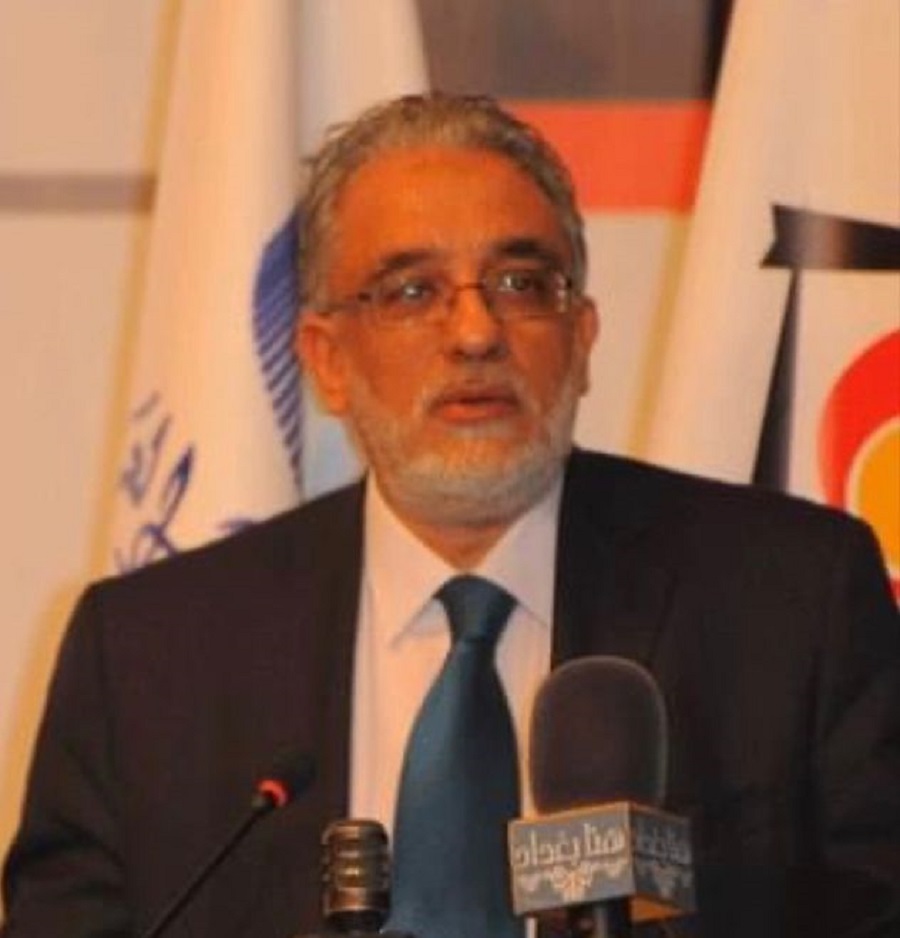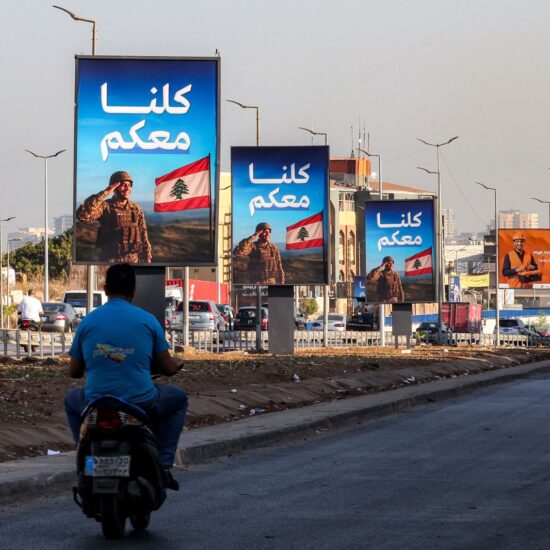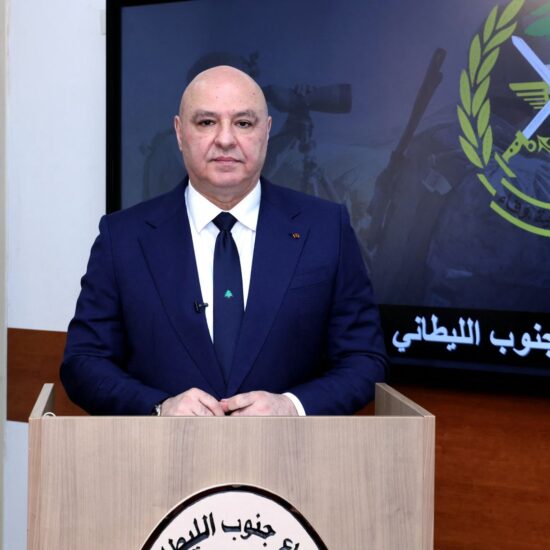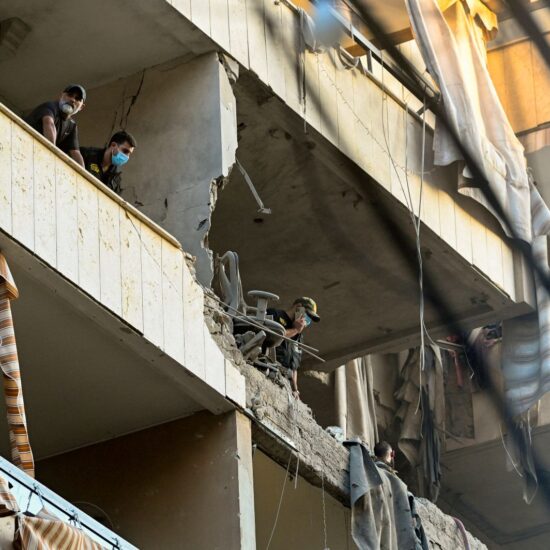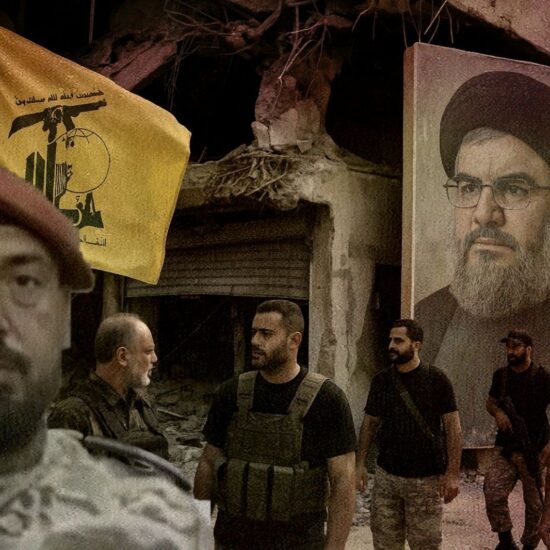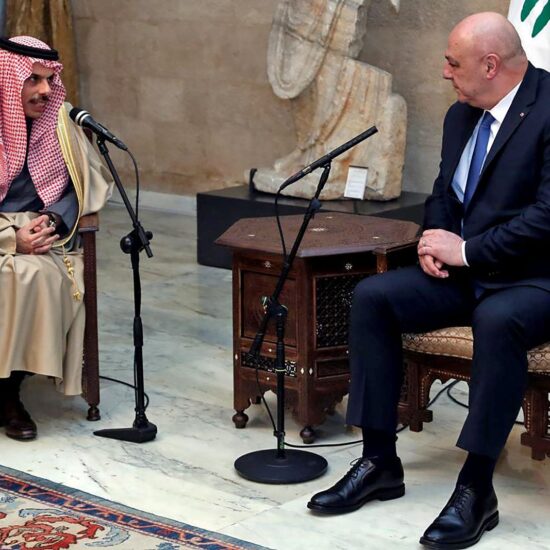
On the burner is a project law seeking to replace deposits trapped in the banking system with a Deposit Recovery Fund (DRF). Also a joint proposal by Government and the Monetary Authorities for a solution for USD deposits exceeding Usd100,000 that are currently stuck in the banking system is on the burner, NOWLEBANON has learned. The proposed architecture involves issuing depositors USD zero-coupon marketable bonds equivalent to their original deposit amounts, which would be redeemed after 40 years. Additionally, deposits of up to Usd100,000 would be returned to depositors in full, presumably over the same period. Zero coupon bonds also allow for giving a bond with a nominal value equivalent to the deposit.
But this is not about a return to better fortune; it’s about compensating the depositor with their own money by investing the available liquidity on their behalf, then asking them to wait 30 years for the accumulation of interest to take effect. This solution is purely cosmetic, while the recovery fund, if designed intelligently, is not cosmetic, even if the promise of full repayment is very long-term.
The major difference is that if the deposit recovery fund solution is adopted, the available liquidity can be distributed to depositors instead of being frozen to fulfill the promise of nominal value repayment at maturity, as in the case of zero coupon bonds. Not to mention that the Lebanese economy benefits from distributing this liquidity to depositors instead of lending it to foreign parties for thirty years!
What is at stake
According to stats confirmed by NOWLEBANON there are 1.3 million account holders (representing almost 94 percent of the total depositors). They have less than Usd200,000 in deposits but make up just 30 percent of all accounts by value. The remaining 70 percent of all deposits are worth Usd65.54 billion. They are held in just 87,000 accounts. Were the threshold set at Usd500,000, some 98 percent of all accounts would be exempt from compliance measures. The remaining 2 percent of accounts subject to compliance measures, totaling 28,000, would still hold almost Usd47 billion, more than the entire other 98 percent of accounts combined.
Needless to say that the process of repaying depositors has to start with a detailed assessment of the banking sector, and specifically how much money the banks currently hold and how much they owe. Thus, the prerequisite for Phase I of the DRF is a comprehensive audit of the commercial banks and the Banque du Liban (BDL). This will determine, among many other things, the exact size of the “financial gap”, meaning the difference between what the banks owe depositors and the funds they have immediately available to pay these customers. Commercial bank liabilities to depositors are currently estimated at some Usd93 billion, while the banks’ liquid assets and their required reserve deposits at BDL are thought to be in the range of Usd13 billion, entailing a financial gap of $80 billion. The comprehensive audit will settle any ambiguity in this regard.
According to Banque Du Liban (BDL) statistics, the consolidated balance sheet of financial institutions operating in Lebanon show a massive increase in figures in May 2024 when reported in LBP equivalent amid the adoption of the new official exchange rate of LBP 89,500 per USD starting January 2024. In figures, total assets reached around LBP 39,538.71 billion by end of May 2024, compared to LBP 8,191.92 billion at year-end 2023 at a time when the exchange rate was LBP 15,000 per USD. In details, claims on customers attained LBP 24,491.63 billion in May 2024, with claims on the resident financial sector reaching LBP 10,124.30 billion, cash & deposits with central banks leveling at LBP 1,889.24 billion and claims on the non-resident financial sector standing at LBP 1,164.51 billion, among others.
IMF position
The DRF comes conjointly to a fundamental demand from the IMF highlighting the sustainable and serviceable restructuring of public debt in foreign currencies. In the IMF scenario, the burden would indisputably fall on the depositors, while the state would be relieved of the Usd73 billion it claims in estimated losses.
Technically this massive unburdening of the state would happen through the write-off of bank deposits in dollars at the BDL which is offset by the write-off of bank deposits from both citizens and foreigners, and, finally, the write-off of the government’s obligations to the central bank. As a result, the state would only have market debts in foreign currency–including from Eurobonds (banking and non-banking)–and bilateral and multilateral debt. Half of these Eurobonds are held by international financial institutions, and most have been acquired at high discount.
Any Plan that involves allocating State assets to repay local dollar depositors has the risk of triggering the seniority of Eurobond holders over depositors on claims against the State; and/or making EB holders pari-passu with depositors on BDL assets including gold said Michel Accad general manager of BankMed.
One key aspect of the government plan presented by vice prime minister Chami was that it avoided this problem altogether by having the Zero Coupon Bond ( ZCB ) as the main component (or in lieu) of the DRF. But very few people wanted to understand the ZCB – and it’s now too late anyway for it given future interest rate expectations, Accad believes. When rates are close to their peak and BDL/banks buy ZCB at say 17 cents and distribute them to depositors, then, when rate expectations fall, the value of the ZCB increases, so depositors could sell back those ZCB at say 30 cents or more, he explained. The bill for the creation of a bank deposit recovery fund is based on a tax imposed on private sector individuals who repaid their loans in dollars at a rate of 1,507.5 Lebanese pounds per dollar, while the national currency was hitting record lows against the dollar.
Taxation on Gains
According to the bill, the individuals targeted would have accumulated “exceptional gains” by repaying their loans from banks in dollars at an exchange rate that had no connection to the market reality. Simply put, these gains should be subject to income tax. According to the existing law, income tax is a progressive tax ranging from 4% to 25% on profits made. However, calculating “exceptional gains” can be complicated, especially considering that repayment of previous loans was often done from a credit account to a debtor account belonging to the same depositor.
In the IMF’s view, writing off deposits would transform the state’s dollar debt into an amount less than 100% of the gross domestic product (GDP), making its solvency level acceptable. The state would then be able to service its debt with a reform program supervised and financed by the IMF. The most important question is: why does the IMF require the cancellation of dollar deposits and the debt owed by the BDL to banks? In short, the IMF is obligated to protect the quotas of its member countries. From these reserves, the IMF members obtain interest equivalent to the interest of Special Drawing Rights. The IMF must ensure that the quotas of its member countries are not exposed to any risks, as it is responsible for lending to countries facing liquidity shortages and providing global liquidity. For this reason, the IMF first demands that Lebanon, as a member state, avoid high sovereign risks by writing off the BDL’s—and the state’s—obligations to banks. An agreement will not be reached without cancelling most of the deposits and banks’ capital against their assets in the BDL. It seems the government’s leadership is moving in this direction to obtain a certificate of good behavior from the IMF. According to the estimates of the International Monetary Fund (IMF), the total profits made by borrowers through the repayment of loans in bank checks denominated in “lollars” or Lebanese pounds, amount to $15 billion. This figure does not include the profits that would have been made after mid-2022. As for individuals who had taken out personal and housing loans, they will not be subject to taxation.
That being said, there is much to discuss before the bill is finalized in Parliament, especially as the exchange rate for “lollars” varied from day to day. For example, a borrower of one million dollars could repay their loan with a check for Usd150,000, Usd130,000, or Usd120,000, depending on the daily exchange rate.
BDL policy
Earlier the new BDL board maintained the exchange rate stability by decreasing money supply, limiting liquidity for LBP speculators; and increasing numbers of professionals being paid in dollars, thus reducing the need for foreign exchange markets. There has not been a real tentative to liberate stuck deposits only some circulars which gave depositors a scarce monthly of Usd 300/400 or their dues. Thus, a natural balance between supply and demand was achieved.
Following years of continuous decline, BDL managed to increase BDL’s assets (or reserves) by about Usd1.3 billion by purchasing dollars in the market. However, this achievement owes less to BDL’s skill and more to the abundant circulation of dollar liquidity.
The annual report confirms that BDL’s reserves (or assets) were Usd38 billion just before the crisis. This was the figure cited by the former governor, who claimed it was enough to meet Eurobond deadlines and prevent a criminal default. However, these guarantees proved futile as top officials had their own personal agendas.
The BDL stopped state funding without any qualms. In the meantime, the state no longer pays interest on Treasury bills held by the BDL. These Treasury bills in its wallet have decreased by Lp6 trillion over the course of a year.
In terms of foreign currency, BDL confirmed the Usd16 billion debt burden that the former governor had imposed on the state in 2023, by reassessing an old Treasury loan (which, back then, sparked considerable controversy by the same bunch of critics). This debt is in addition to the Usd5 billion in Eurobonds held by the BDL. However, other past loans extended to the state, especially to EDL, have been disregarded.
Association of Banks (ABL) Position
For the ABL a DRF is one of the possible solutions, provided that they don’t end up
bearing the bulk of its financing, while the State only assumes a small share that is more hypothetical than realistic. The State has squandered 62 billion and 670 million dollars from deposits in foreign currencies at the Central Bank, out of a gap of 73 billion, the equivalent of 86% of this gap. Therefore, it must contribute in the same proportion to the “Deposit Recovery Fund” by different means, including but not limited to partnering with the private sector, as well as allocating part of the expected future oil revenues to this Fund. Otherwise, it is nothing but a way for the State to evade from its responsibilities in a clear violation of Article 113 of the Code of Money and Credit, which stipulates that it is up to the State to fully cover the losses of the BDL.
A statement by the secretary general of the ABL underlines that the decrease in foreign currency deposits by about Usd27 billion, since the beginning of the crisis, is mostly due to the repayment of a large part of the loans by checks or bank transfers. As a result, these loans currently represent about Usd12 billion. Any future drop in the amount of deposits will only be the result of withdrawals, which may not represent more than 2 to 3 billion dollars annually. This means that any depletion of the remaining deposits would only be realized in 30 years! The banking sector lacks the luxury of time to wait while accumulating annual losses and suffering downsizing it’s suffering from?
Writing off deposits at any time in the future would in fact be motivated by the State’s desire to discharge itself of its financial commitments to banks, in an indirect way. In that case, the ABL said that it will continue witnessing the State as a passive spectator watching irresponsibly the confrontation between banks and depositors.
Risks of the DRF
Establishing a deposit recovery fund in Lebanon comes with several potential risks and challenges Mohammad Ibrahim Fheili, Risk Strategist, and Monetary Economist told NOWLEBANON.
The key concerns are that securing sufficient initial capital for the fund can be difficult, especially in a financially strained economy, further the banks will be encouraged to take on higher risks, assuming that the recovery fund will bail them out in case of failure, Fheili said.
Many other reasons line up against the success of the fund Fheili believes mainly that “ensuring transparent and efficient management of the fund to avoid corruption and misallocation of resources will be an impossible task. Another issue will be that diverting funds from other critical areas to establish the deposit recovery fund might strain the economy further. Therefore the fund will not have sufficient liquidity to cover large-scale deposit demands or bank failures he added.
According to Fheili the issue of transparency will be highly underlined as gaining public trust in the fund will not be easy, especially given the current lack of confidence in public and the banking sectors. Political influence might undermine the fund’s operations and decision-making.
Given the challenges of corruption within the Lebanese government, establishing a deposit recovery fund with robust transparency and accountability becomes even more critical, he added.
On the issue of regaining block deposits Fheili believes that there is no concept of reconstituting deposits and repaying depositors in full. What is needed is to restore confidence in the banking sector, which cannot be achieved by attempting the impossible task of repaying all deposits. Instead, efforts should focus on reassuring depositors about the safety of their money in bank accounts.
To this goal, commercial banks must build the necessary liquidity to meet customer demands for withdrawals and loans. It is the responsibility of the banks to support and collaborate with the Central Bank in this endeavor. Achieving this is possible within a supportive economic environment he quoted.
It is the state’s responsibility in this crisis is to move towards effective management of all state assets, Fheili quotes. This does not require the creation of sovereign funds, independent institutions, or other entities. Implementing reforms in the management of public sector institutions, particularly those with commercial functions (i.e., State-Owned Enterprises – SOEs), can enhance state revenues and contribute to achieving a balanced budget, he adds. Effective public finance management will enable the state to meet the conditions necessary for negotiating with Eurobond holders and creditors to restructure and reschedule public debt he concludes.
There is a need to improve Lebanon’s credit rating, subsequently enhancing the relationship between Lebanese banks and correspondent banks Fheili said. This improvement will benefit the commercial banks in Lebanon, which were the first to be badly affected by the country’s decision to default in March of 2020.
The argument being that a positive shift in the economic and financial environment will support the return of banks to providing a variety of services to both depositors and borrowers. While liquidity to meet all depositors’ desires may not be immediately available, there will be sufficient liquidity to meet their essential needs. This transitional phase will not include all banks, and some commercial banks operating in Lebanon may not see immediate benefits. The significant challenge will be securing resources to address troubled assets and insolvent banks that are unable to continue serving the economy.
Fheili notes that a number of Lebanese banks are currently benefiting from the higher interest rates in the USA, choosing to invest their available liquidity in these high-interest opportunities rather than meeting depositors’ demands for withdrawals or supporting financially distressed economic agents, as banks are traditionally expected to do. This practice has been enabled under the oversight of Banque du Liban (BDL) through circulars 150, 154, and 165. Although this conduct borders on unethical, these banks have managed to accumulate healthy liquidity, which will aid them in returning to full service for the Lebanese economy.
It is important to note that banks stopped paying interest on deposits in 2020 and have since relied heavily on excessive commissions and charges to generate income. Banks must take responsibility for their poor risk management, and the resulting losses should not be nationalized through the establishment of a deposit recovery fund or sovereign fund he recommends.
Maan Barazy is an economist and founder and president of the National Council of Entrepreneurship and Innovation. He tweets @maanbarazy.
The views in this story reflect those of the author alone and do not necessarily reflect the beliefs of NOW.


